I received a lot of response in the last blog to the photographs from my time in Bosnia , a wonderful country where I worked for ten years from 1996 to 2005 and whose culture , history and people I loved and continue to love to this day .
I drove into Bosnia for the first time on March 5th 1996 from Belgrade just weeks after the war had ended , crossing the Drina river border between Serbia and Bosnia at Zvornik . The next fifty miles took me through the front lines with burnt out tanks and devastated villages and towns all along the road , it was seven o’clock on a winter’s night and there was no other traffic or people out , snow on the ground and a general feeling of complete desolation .
About a half hour out of Zvornik I saw a sign for Srebrenica six miles off to the left , it was barely seven months after the mass killings and even though the full extent was not known of what was later termed by the UN as genocide , enough had filtered through to us in Belgrade that the name added to the nervousness .
My instructions were to drive without stopping to Sarajevo about 70 miles and when I got to the outskirts where I should pick up and follow the tram lines into the centre and be aware that there was a total curfew on lights so no street lights or any lights in shops or houses to act as a guide … keep on the tram lines to the other side of Sarajevo until I saw a big yellow building , the Holiday Inn , on the right hand side … and don’t mind the sporadic mortar and sniper fire , the Bosnian Serbs still have three weeks to leave Sarajevo and they are still exchanging fire with the Bosnian Muslims … a colleague will be waiting for you at the Holiday Inn … no lights on at the hotel of course only candles but I found my colleague … welcome to Bosnia and Sarajevo !
During the Siege of Sarajevo 1992 to 1995 throughout the war in Bosnia , the most dangerous part of the front line right on Snipers Alley , ran from Grbavica in front of the Holiday Inn where I stayed for two weeks during my first time in Bosnia in a room with no electricity and plastic sheets as windows and in the photo the office twin tower blocks in the background is where I worked on the 5th floor for a year in 2005 with EU CAFAO .
In the foreground are original stecak dating from the 13th century , solid stone sarcophogus of the Bogomil people , a heretical off shoot of christianity whose followers found a home in Bosnia during the catholic led religious persecutions in Europe in the Middle Ages .
The Bogomil stecak , which are solid stone , are covered in diagrams and as the Bogomil followers lasted only a hundred years or so in Bosnia and left no written records they are quite mysterious and historians know very little about them merely that their name means beloved of God and Bog means God in Bosnian .
I am to this day fascinated by the story of the Bogomils , a people who were peaceful and spread originally in the 10th century from the Byzantine area of modern day Turkey , did not believe in war and their stecak art is unique some of which resemble spacemen and again historians can shed no light on their origin or demise and most Bosnians including the Bosnian Tourism people seem to have no interest in highlighting a unique part of their heritage but I suppose one can excuse a people recently torn apart by religious extremism not being keen on highlighting another religious element .
The stones are found all over Eastern and Southern Bosnia and I have even seen them as far south as Macedonia where I photographed some of them in Skopje last year but the biggest surviving collection of these enigmatic carvings which were all done by pacifist artists around 1100 AD is in Stolac in Southern Bosnia which is ironic as Stolac in the last war of 1992 became a byword for religious hatred and persecution when the local Catholic Bosnian Croats burnt out and expelled the town’s Bosnian Muslim minority population .
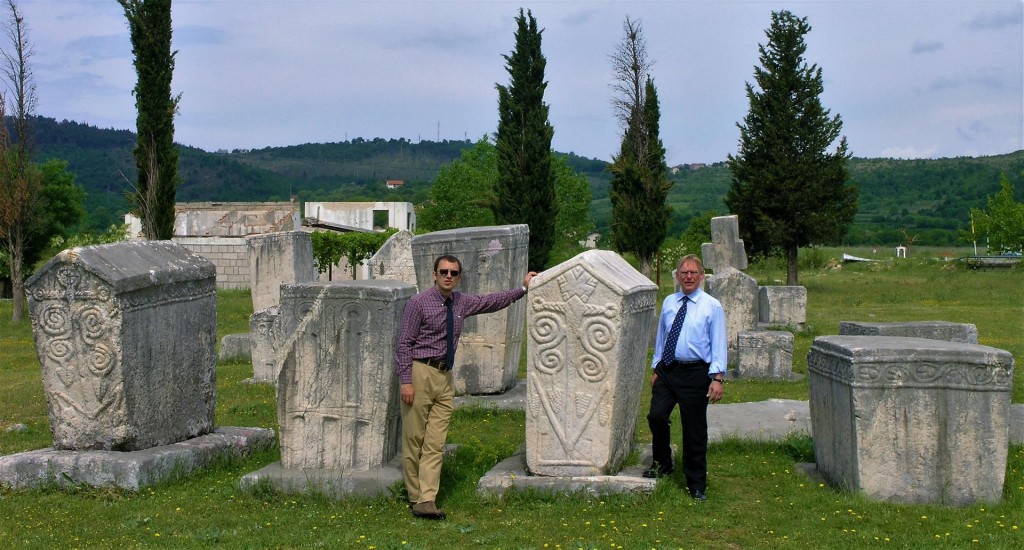
At the Bogomil cemetary in Stolac , Bosnia with EU CAFAO colleagues , Edin Telalagic & Per Sorensen May 2005
I remember in 1999 being present in Stolac when NATO soldiers in tanks had to stay in the town for almost a year to protect Bosnian Muslims trying to return to their destroyed and looted houses and I remember also being ashamed of being a catholic in Stolac that day and it remains a town I hurry through even today .
The stecak design three hundred years later in the 16th century inspired and was copied by the Jewish community in Jerusalem where they used the design for their own local grave stones in the Sarajevo Jewish cemetary but this practice lasted only fifty years and only in Sarajevo and nowhere else in the jewish world .
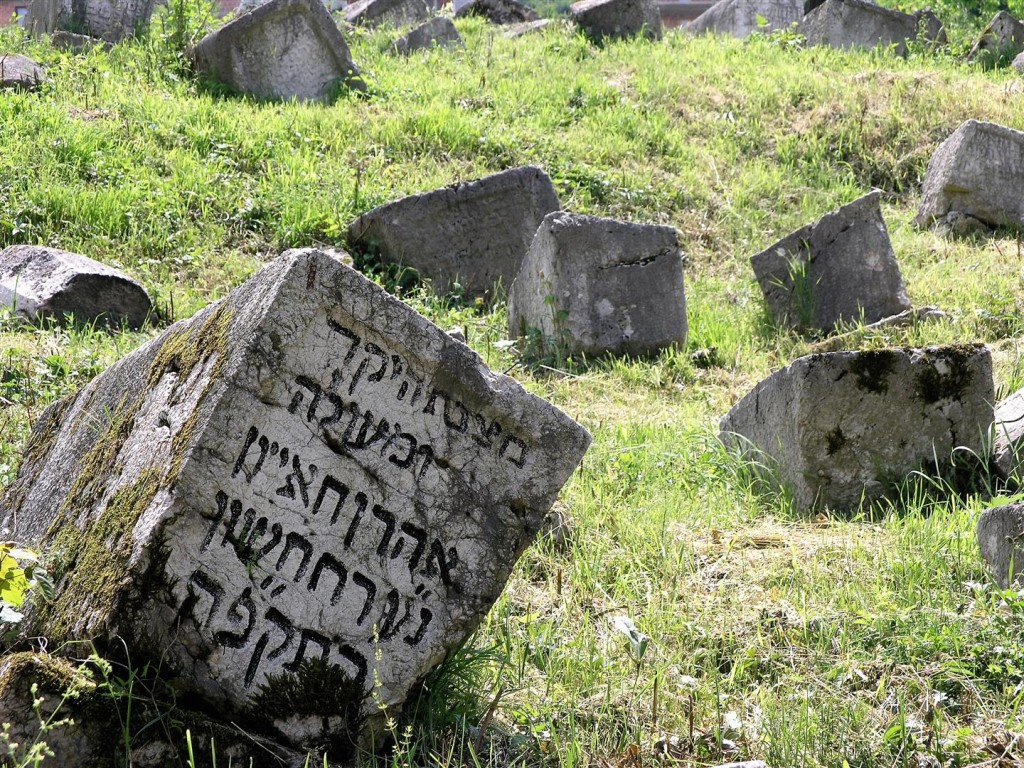
Jewish grave stones from the 15th century carved in the Bogomil manner in the Jewish Cemetary in Sarajevo
The Jewish cemetary in Sarajevo in 1996 was off limits as a mine field when I first visited it as the former front line had run through it and the place was full of mines however on my next visit a year later I met a local woman in her 80’s who regularly grazed her goats on the grass between the head stones and she offered to take me through it on the goat tracks … which she said was safe as long as I walked behind her … the scariest walk of my life but it was an experience , the first ( and last ) time I ever walked through a mine field … and I managed to get this photograph of the Jewish stecak !
Of course the Jewish community in Sarajevo were originally there as refugees when they were expelled from Spain as a people by the Catholic Ferdinand and Isabella in 1500 … religion be it Christianity or Islam today has always been extremist and liked to be exclusive .
Bosnia in the Middle Ages , half way between Rome and Constantinoble , had a reputation for religious tolerance unique in Europe at the time and gave a willing home to Protestant and Jewish refugees being expelled from their own Catholic dominated countries such as Hugenots , Cathars and Albigensians from France and Jews from Spain while Sarajevo long before the Ottoman conquest had a thriving Muslim community and Jewish Synagogues , Muslim Mosques , Orthodox and Catholic Churches all coexisted and thrived peacefully .
We were driving back on a remote mountain pass between Konjic and Sarajevo in late October 2005 when I saw these fallen Bogomil stecak on a mound overlooking the dirt road we were on , such an isolated location with no signs or markings of any kind and historic grave slabs over a thousand years old at the mercy of anyone who needed stone for rubble or building purposes .
Bosnia is a beautiful country with high mountains and deep river canyons and I remember the shock when I rounded a corner on the road out of Gorazde along the Drina towards Foca in Eastern Bosnia in April 1996 and got my first view of Durmitor , the White Mountain , on the border with Montenegro which is the view I remember to this day as being representative of the spectacular scenery of Bosnia .
Local Balkan people I worked with were always surprised that I knew quite a bit about their history but as I explained my father , a life long member of the Irish communist party , made it mandatory for me to read from age eight onwards the weekly international communist party newspaper , Soviet Weekly … so I grew up learning data such as the yearly tractor production in Ukraine , wheat production in Serbia , copper mining in Macedonia and as for Tito …well I knew everything about Tito which as you can imagine went down a treat with my catholic priests and teachers in the 1950’s Ireland !!
Irish catholicism in the 1950’s was not a happy place for jews , protestants , muslims but top of the hate list with their own special place in hell were communists !
I used to walk across this bridge to my office every day for three years in Sarajevo and this was the bridge where a 19 year old student from NW Bosnia, Gavrillo Princip , assassinated Archduke Ferdinand on June 28th June 1914 , an event that sparked off World War 1 .
As a measure of how names change according to the political times , this bridge was built by the Ottomans in the 16th century and was known locally as the Latin Bridge as it crossed the river to where the catholic area of Sarajevo was , next after the annexation of Bosnia by Austria in 1908 it became known as the Austrian Bridge , this was changed in communist times in the 1950’s to ” Princip Bridge ” which is what it was still called when I first arrived in Sarajevo in 1996 however in the last few years it is known as ” The Freedom Bridge ” .
We have a small connection here in the garden as ten years ago I bought thirty railway sleepers that had been imported from Bosnia where they had been replaced from the railway system there … these were the original railway sleepers used by the Austrian engineers in their construction of the rail system in Bosnia after they had taken control of the country in 1878 .. the same railway line that the body of the assassinated Archduke was carried back to Austria on .
We built the outdoor shower from some of these railway sleepers .
And yes we do use this shower every day even in snow and ice … and no it is not heated !!
The Ottoman Empire ruled the Balkans for five hundred years since the 14th century conquest , with great cruelty it has to be said , and I was fascinated by the bridges they built and in my time there I visited and photographed most of them .
This bridge is the last Ottoman bridge after you leave Sarajevo on the old road to Visegrad , built in 1500 and was known as the Goat bridge as it was on a minor country track only intended for pedestrians and animals . It was a favourite walk of mine when I lived in Sarajevo for two years in 1997 .
Trebinje in Eastern Bosnia has a wonderful Ottoman bridge which today is in an out of the way part of the town with no sign posts or anything to mark it , a reminder of Islamic rule in the heartland of Bosnian Serb nationalism and I am surprised it survived the Bosnian war intact and that a stray shell didn’t destroy it ” by accident ” .
Trebinje is and has always been a Serb dominated town and as is common in the Eastern part of Bosnia along the Drina river, distrusts the International presence in Bosnia whom they suspect favours Croats and Muslims when the aid money is being handed out . I set up an EU fiscal team in Trebinje in 1996 , we never felt welcome , in fact quite the opposite and I always had a problem getting international staff to work there and one day driving out of Trebinje in 1999 at the time of the NATO bombing of Serbia , the feelings of Trebinje’s Serbs was made clear to us !
There has been distrust between Serbs and Muslims along the Drina river since Ottoman times began in the 15th century and putting it bluntly they hate each other there . Once in 1997 when driving back from Gorazde I was flagged down by a frantic Bosnian Serb minibus driver who had taken a wrong turning with a coach load of terrified Serb kids returning from a chess tournament and was now by mistake in the Bosnian Muslim controlled area just outside the city and fearing an attack begged me as an international in a vehicle with diplomatic plates to shepherd the coach through to the Serb area … things have improved a lot since then and there is complete freedom of movement now throughout Bosnia … but the fear and distrust remains and is never far from the surface which of course is encouraged by the three main Serb , Croat and Muslim nationalistic parties as an integrated united country is the last thing the self serving politicians of Bosnia want .
Probably the most photographed and certainly the most famous of all is the bridge at Mostar over the Neretva river which now divides the Bosnian Muslim and Croat populations of the city who have bitter memories of each other from history and most recently the Bosnian War of 1993 and no intention anytime soon to start any reconciliation process .
The Mostar bridge , like all Ottoman bridges , is regarded by Croats and Serbs as a symbol of the hated “ Turkish ” occupation of the Balkans and even though it had protected UNESCO status this didn’t save it from being blown up by the Bosnian Croat army in 1993 who chillingly cheered as it fell into the river .
At the top of this photo of the Mostar Bridge you can see a giant Christian cross , 33 metres high , one for every year of Jesus’ life according to the architects but in reality designed not for piety but to be seen from the Muslim side of the Neretva river and coincidentally also marking the spot from where Bosnian Croat artillery destroyed the original bridge … religions what ?
If Mostar is the most famous then the most infamous of the Bosnian Ottoman bridges is the bridge over the Drina river at Visegrad which was the setting for Ivo Andric’s novel “ The Bridge on the Drina ” … Andric was the most important and revered of Yugoslav writers and won the Nobel Prize for Literature with this book in 1960 .
I used the word infamous as it was on this bridge in 1992 where numerous Muslims were butchered by Bosnian Serb forces and thrown off the bridge … Visegrad is still a town where I always get the shivers .
I remember one Sunday just weeks after arriving in Sarajevo in March 1996 I decided to drive to Visegrad , part sight seeing to see the famous Bridge on the Drina and partly work as an initial survey to set up a base for a proposed team and my landlord in Sarajevo , a Bosnian Muslim , paused at my car to ask where I was going that day and when told sadly shook his head and said “ they have killed Muslims in three wars in Visegrad since 1914 ” … my second inkling that Visegrad was going to be different was when a Serb friend of mine I had worked with in Belgrade came to meet me in Visegrad a few weeks later to work as an interpreter for the team and after a few hours in the town he resigned saying that as a Serb even he found the town to be strange and advised against having any foreign team working there … I took his advice .
When I was taking this photo in Visegrad in September 2003 , an old soldier walked by wearing his chetnik military hat , a quiet spoken lovely man who allowed me to take his picture , a veteran of the Serb royalist army who fought against Tito’s communist partisans in WW 2 … the royalists called themselves Chetniks and now it is a term used derogatively by Croats and Muslims for the Serbs .
For me the opportunity to work in the Balkans where I spent ten years in Bosnia and three years in Macedonia with spells also in Croatia , Serbia and Montenegro was a defining part of my life and I enjoyed every day of it … even the dodgy times when I accidentally came under fire in Sarajevo and Mostar in 1996 … reassuringly they weren’t firing at me personally so that’s OK then (!) or more seriously in 2001 when driving down the main street to my office in Brcko in NE Bosnia I was trapped in my Nissan Patrol , caught up in the Brcko education riots when a demonstration of 300 Bosnian Serb students shouting Serbia , Serbia , rampaged through the streets over three days , breaking windows of all the Bosnian Muslim shops along the main street in the process and seeing me tried to overturn the vehicle and get me out … again nothing personal but I was a representative of the international regime trying to get Serb and Muslim students to study in integrated class rooms … ironically because as an Irishman I was no stranger to the lack of integration between protestants and catholics but in this case unfortunately I was in the wrong place just at the right time for these students to vent their outrage on .
On a lighter note , Snezana , a Macedonian born in Bitola , a direct line from Alexander the Great ( as she never forgets to remind me ) whose Orthodox family emigrated to Denmark when she was six , has always collected strays, be they cat or dog , and then leaves them to me to look after and even though the cats here look the same , one is from Sarajevo and the other from my house in the Seychelles !
Memorabilia and souvenirs of the war in Bosnia photographed at a market stall in Mostar in 2005 .
We in Western Europe live a sheltered existence , it has never been like that in the Balkans where losing everything and being ethnically cleansed from your town or village is a fact of life , where you are given 20 minutes to pack one suitcase per family member … what do you pack in such a situation I asked one young girl in our office in Sarajevo whose Bosnian Muslim family was expelled from Capjlina in Southern Bosnia by Bosnian Croats… passports , education and birth certificates that you need to start a life somewhere else , family photos , a few treasured CD’s and your best jacket and it is then downstairs into a waiting truck full of your neighbours from the apartment block and as you leave the complex another truck is arriving bringing similarly expelled Bosnian Croat refugees from a Muslim majority area each also with one suitcase who will then move into your apartment .
I came to live in Sarajevo just two months after the siege was lifted and although daily life quickly got back to normal , for years afterwards you could see the strain in people’s faces but Balkan people are resilient and stoical, bad things have happened in turn to all of them and Serbs , Croats , Muslims , have suffering in their DNA going back five hundred years and for them the enemy footsteps are always just the other side of the hill .
Anyway that is enough about history and suffering for one sitting and I‘ll end on a happy note FOOD … did I forget to mention that Balkan cuisine is the best in the world ?
Balkan food is basically Turkish cuisine with local variations and for me the most representative of Bosnian cuisine is burek closely followed by cepapcici and if you press me I ‘ll add stuffed peppers and the bean dish known as grah by the locals … these are the big four and I would happily exist on this food for the rest of my life !
Burek is basically the chosen filling in a filo pastry roll and you choose from one (but never a mixture) of meat , potato , spinach or cheese and all of the ex Yugoslav countries , Slovenia , Croatia , Bosnia , Montenegro , Serbia , Macedonia, make it … but of these you can forget Croatia and Slovenia as their heart was never in burek , too Turkish for them and they make a rubbish version … Montenegro , Serbia and Macedonia make a passable version of burek but too much dough for my liking and not enough mince … the best burek is made in Bosnia and the BEST burek in Bosnia is made in Sarajevo … this is not a subject for debate as just about the only thing Bosnian Croat , Muslim and Serb agree on is that the BEST burek is made in Sarajevo !
The first time I tasted burek was three days after I first set foot in the Balkans , on night duty in the Command Centre in Skopje of the Sanctions Mission , I was alone in the office at 2 am and a black US Customs Officer from Houston , Texas , came in and placed a steaming package in front of me … eat this he said and it will change your life … and it did !!
For the next two years in Macedonia I ate local food every day and was hooked for life , our favourite restaurant in Skopje was called Dol Met Fu which became a home away from home for most of us in the OSCE MacSam Mission and I went back there last year after twenty years , same owner but now it is called Pellister and it is my nominee for the best local restaurant in the Balkans !
Cevapcici are small sausage size pockets of minced lamb served with raw chopped onions stuffed in a flat bread called lepinje with a portion of kaimak ( a kind of yogurt with attitude ) on the side and like burek everyone admits the BEST cevapcici are also made in Sarajevo in one shop in the Old City called Zeljko …. I regularly eat there when in Sarajevo and it is a place where only cevapcici are served and where creature comforts are small and you sit cramped together on long bench seats with everybody else … and you queue but the food is historic !!
Cevapcici are a staple dish all over the Former Yugoslavia but are best in areas where the Turkish Ottoman influence was strongest such as the Muslim areas of Bosnia , Macedonia and Kosovo .
A busy cafe scene in Pecs or Peje as it is now known since the expulsion of the Kosovo Serbs after the NATO war with Serbia in 1999 and which is now almost exclusively Albanian … typical Balkan tit for tat when the political power shifts and Serb rule from Belgrade in the Milosovic era 1989 /1999 was relentlessly oppressive and sent over one million Albanians over the border as refugees in the winter of 1999 but now it is the Serb’s turn to be expelled and apart from a few enclaves in North Mitrovica and around Gracanica there are few Serbs now remaining … making Kosovo an Islamic Republic which is a pity as Kosovo like Macedonia needs the historical diversity of its population .
I took this photo during the morning coffee break on a cold February day in Peje in 2011 , it was a favourite place for me to enjoy my coffee but you will note the total absence of females … I was told that they gather indoors in each other’s homes .
A Roma child at the Peja Market
Kosovo shares it’s southern border with the Sharplanina Mountains of Macedonia and has stunning scenery .
Back to Balkan food and Grah or the Bean Dish is really only done well by the Serbs and in even the smallest of roadside shacks throughout Serbia and the Serb areas of Bosnia you will get through the winter on this dish alone … stuffed peppers can be done anywhere and is an in dish now all over Europe with TV chefs but the best , the very best stuffed peppers are done “ under the bell ” that is cooked in a covered iron pot on an open fire … in the Balkans but especially in coastal Croatia , Macedonia , Serbia and throughout Bosnia .
I can’t end without mentioning Ajvar which is a hot spicy paste made of roasted red peppers , garlic and onion preferably home made from Macedonian grown peppers and my first experience of it was in September 1994 in Skopje when it seemed every household was making their own ajvar in the garden in huge vats over open fires and the smell was everywhere .
Ajvar is sold throughout the Former Yugoslavia but the only one that approaches the home made variety is made in Macedonia , there is a good version made in Belgrade but ajvar made anywhere else is only a pale imitation . I buy this Macedonian ajvar , Mama’s Domaci Ajvar , Ljuti ( Mama’s home made hot ajvar ) in large quantities every year and carry it home , the Belgrade version is sold on Amazon and is very good though quite expensive but they won’t ship to Ireland for some reason .
Books on the 1992 / 1995 war in Bosnia
There have been hundreds of books written about the Bosnian War with most published in the five to six years immediately after the war ended in 1995 but to be honest most of these are not worth reading now as they are very biased and do not take into account the build up of tension under Tito when WW 2 ended nor how the memory of the atrocities committed against the Serbs by Croats and Muslims in that war festered and finally burst into ferocity at the break up of the Former Yugoslavia under Milosevic in 1991 .
The following are still in print and available through Amazon and are books I would recommend .
Misha Glenny is always reliable and his book The Fall of Yugoslavia is essential reading as is Laura Silber & Allan Little’s the Death of Yugoslavia which gives a factual account without bias on events leading up to the war in Yugoslavia . Noel Malcolm’s a Short History of Bosnia is excellent for background but is so dull it makes watching paint dry seem exciting . Richard Holbrooke’s To End a War is a great read if only to see the cynicism of the US in not allowing a Muslim / Croat total victory in 1995 as it didn’t suit US Foreign Policy to create a united Bosnia without separate entities . For sheer emotion plus great writing , Roger Cohen’s book Hearts grown Brutal , is a book I always enthuse about . If you want some specific overview I can recommend Tim Judah’s book the Serbs while Marcus Tanner’s book Croatia , a Nation forged in War is also good but Judah’s book is better and he has also written the classic book on Kosovo and the 1999 NATO campaign . Milos Stankovic’s book Trusted Mole is written from the perspective of a serving British army major whose father was a royalist Serb from Belgrade and is a great read .
An unusual book is by our own Irish iconic writer , Dervla Murphy, who cycled at 71 through the Balkans from Zagreb to Albania in 1999 and wrote Through the Embers of Chaos and for me she has captured without bias the essence of the Balkans . I enjoyed reading Fighting for Peace by General Sir Michael Rose when it first came out in 1998 if only for the sheer pomposity and brio of the British General and I remember asking our team’s interpreter in Bihac what Rose was like as she had worked with him in 1994 for the few hours he helicoptered in to the Bihac enclave in NW Bosnia during the Serb siege and her brief summing up was brutally succint ” Tall , extremely good looking and totally out of touch with reality ” … boom boom !!
One off autobiographical books about their time in Bosnia that I found interesting would be Balkan Odyssey by David Owens , Blood and vengeance by Chuck Sudetic , Peace Journey by Carl Bildt , Angela Clark wrote an interesting book about Orthodoxy called When Angels Fall and the really unusual almost surreal book by Anthony Loyd called My war is ended I miss it so and both these books are great reads. When I first arrived to work in the Former Yugoslavia in May 1994 the book everyone and particularly the US members of the Macedonian Mission raved about as the ideal background introduction was Balkan Ghosts by Robert Kaplan which is still very popular but I always found it useless .
Every essential reading list will include Black Lamb and Grey Falcon by Rebecca West , almost 1200 pages , written in the 1930’s , the book is worth picking up second hand and dipping in to now and again but it is the War & Peace of the Balkans for showing off on the book shelf or under your arm in the cafe … but never read !
Lastly I would mention a book published in 2014 to mark the 100 year anniversary of the start of World War 1 written by Tim Butcher called The Trigger in which he traces the story of Gavrillo Princip from a peasant background in Western Bosnia to that fateful day in Sarajevo on June 28th 1914 aged 19 when he pulled the trigger that changed the course of world history . The book is fascinating and reads like a novel and I would suggest you start with this book and if his travel on foot through Bosnia and Serbia hook you then take your pick from any of the other books I have listed .


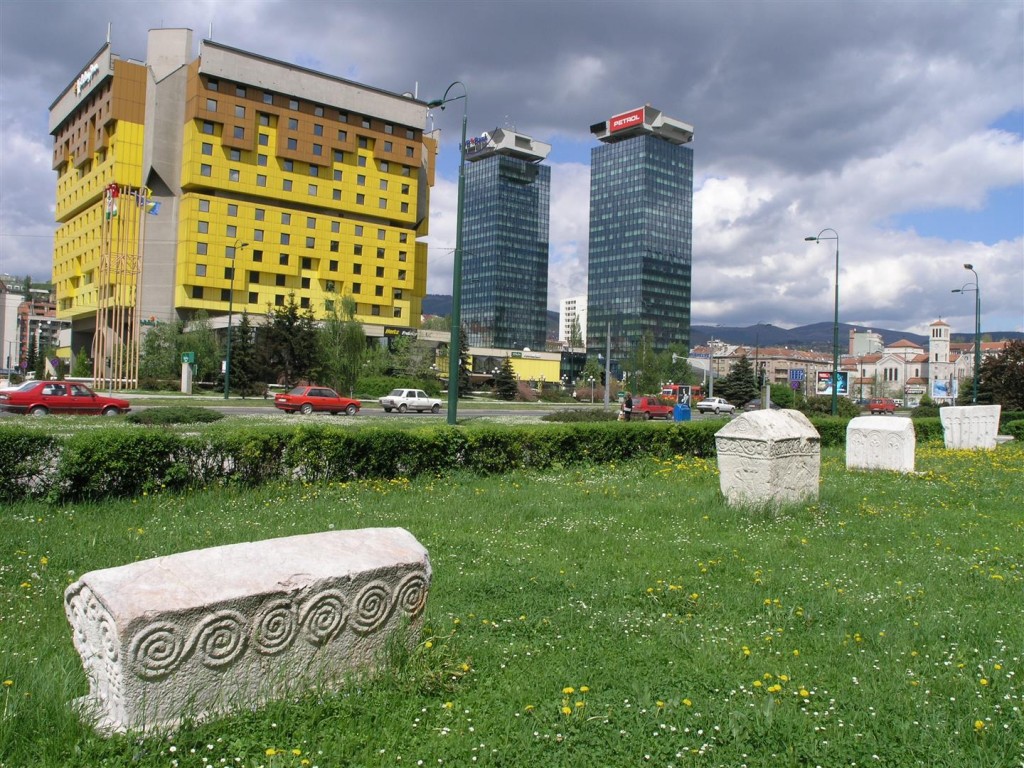
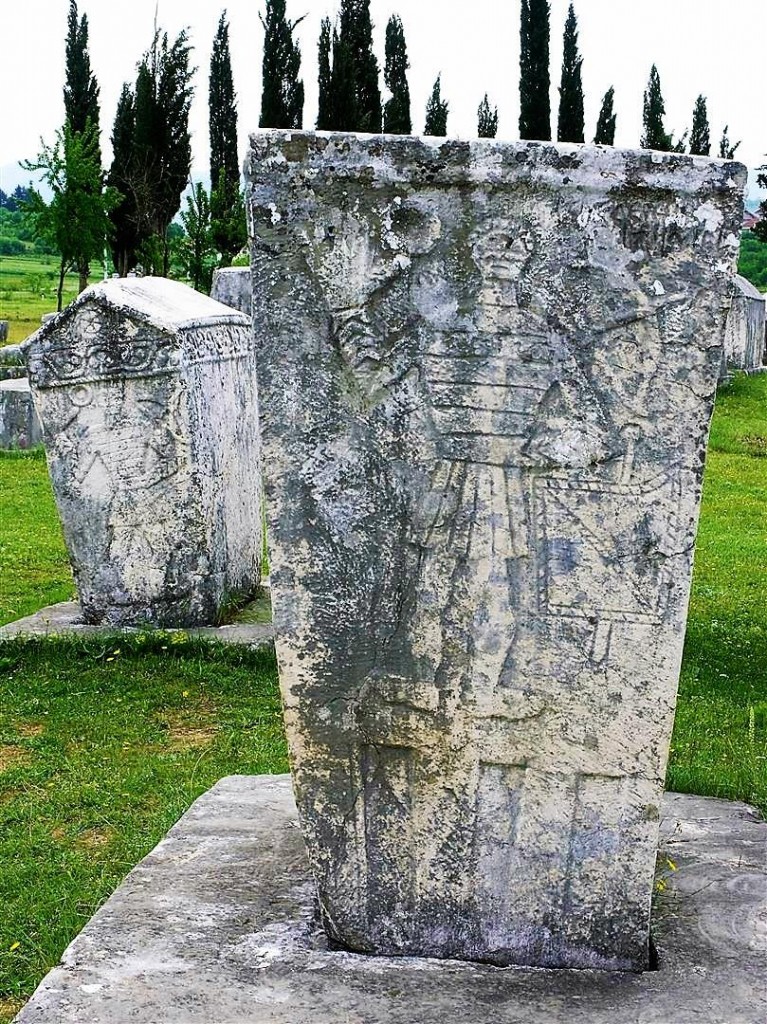
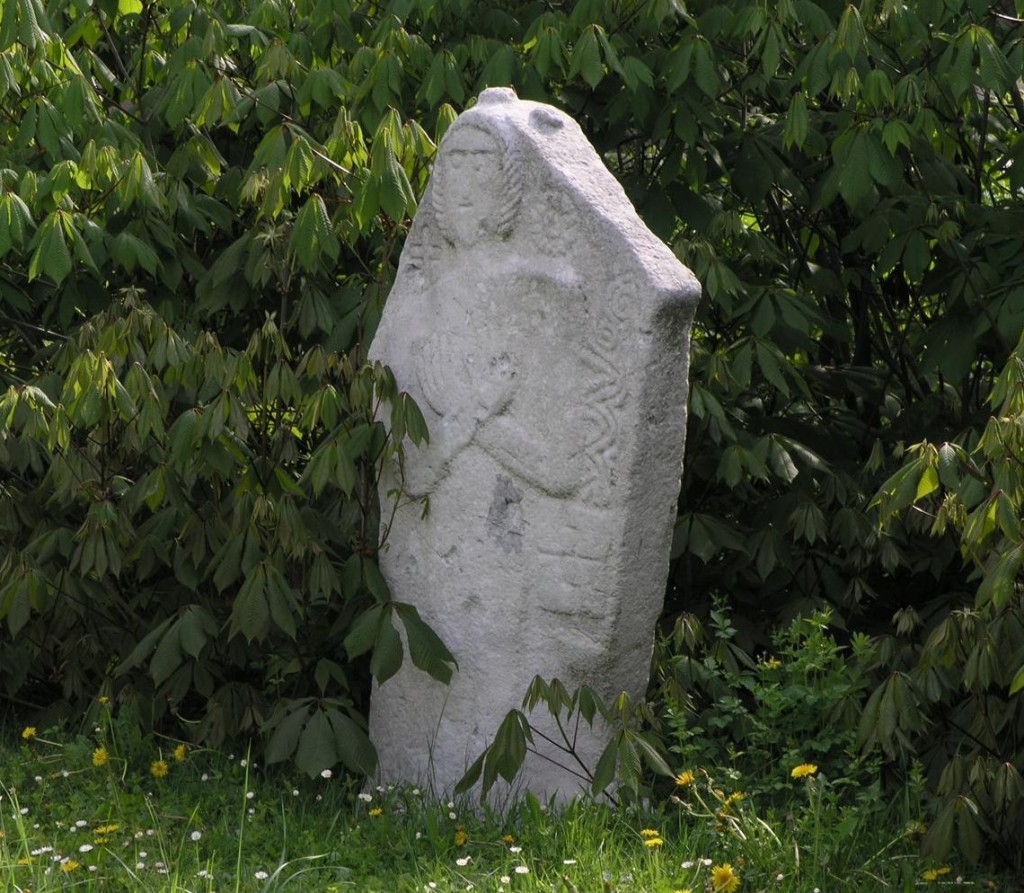
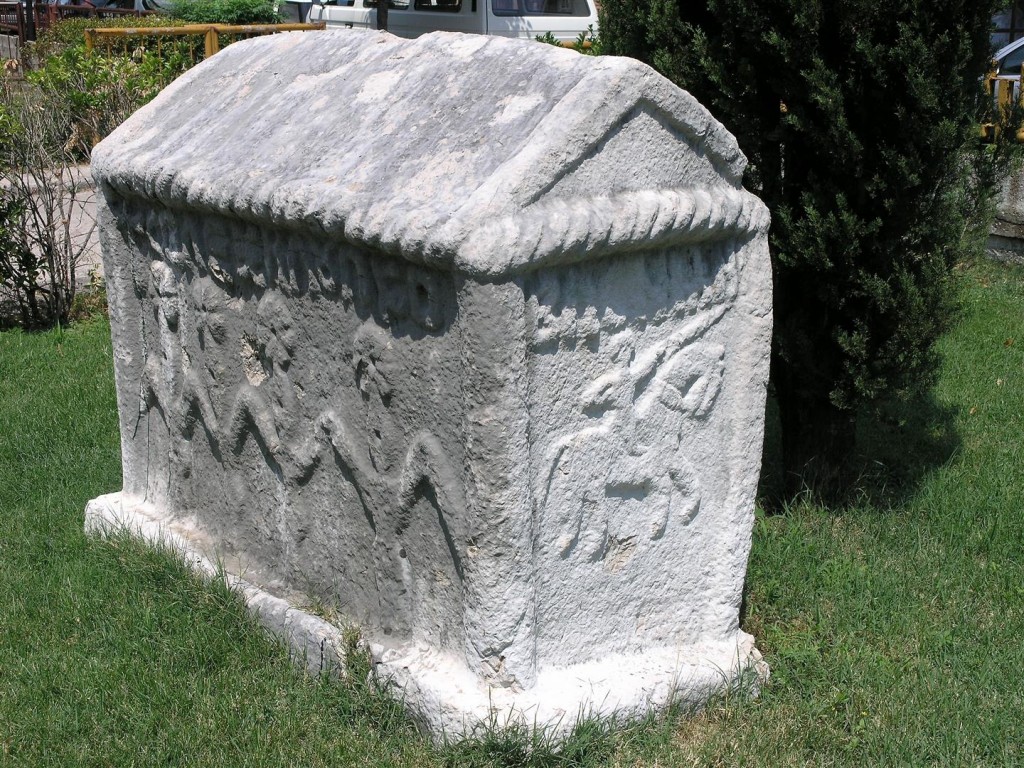
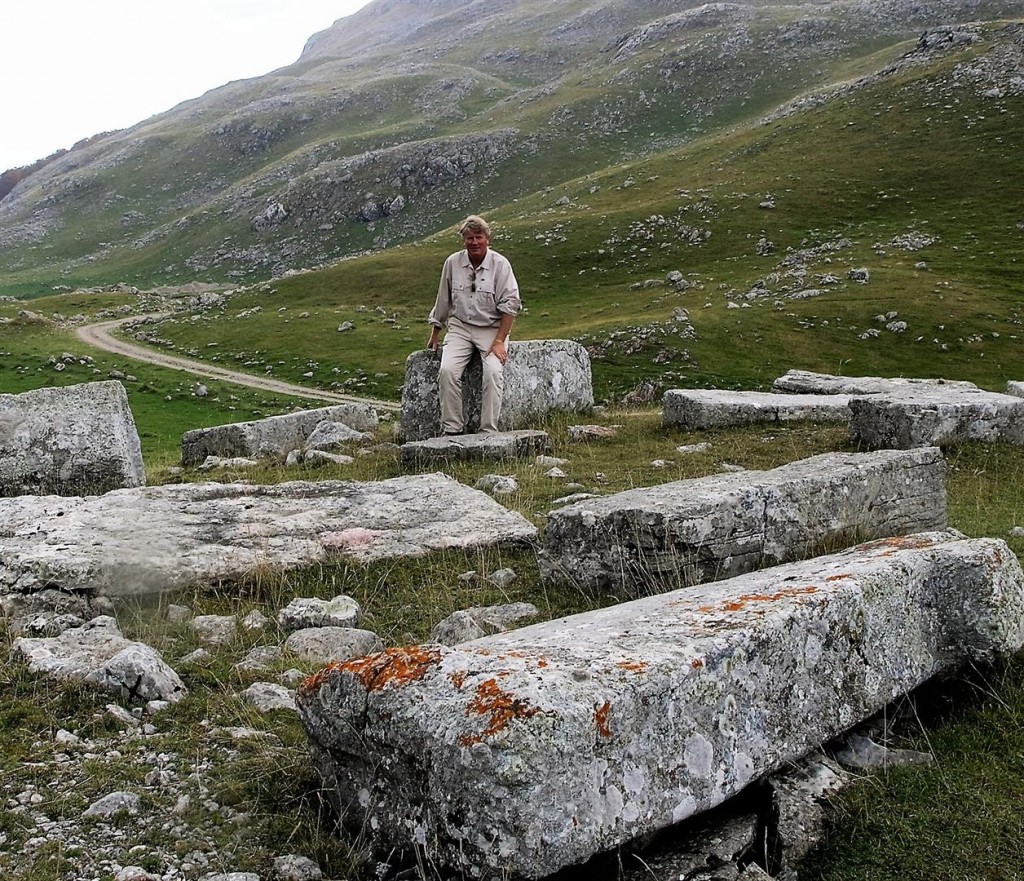
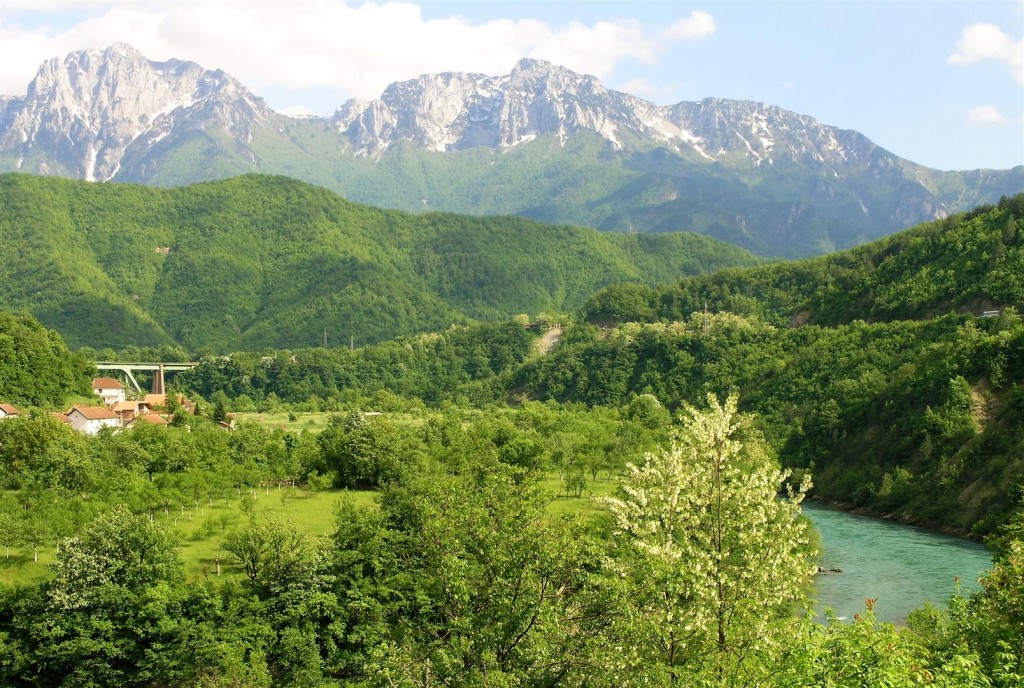
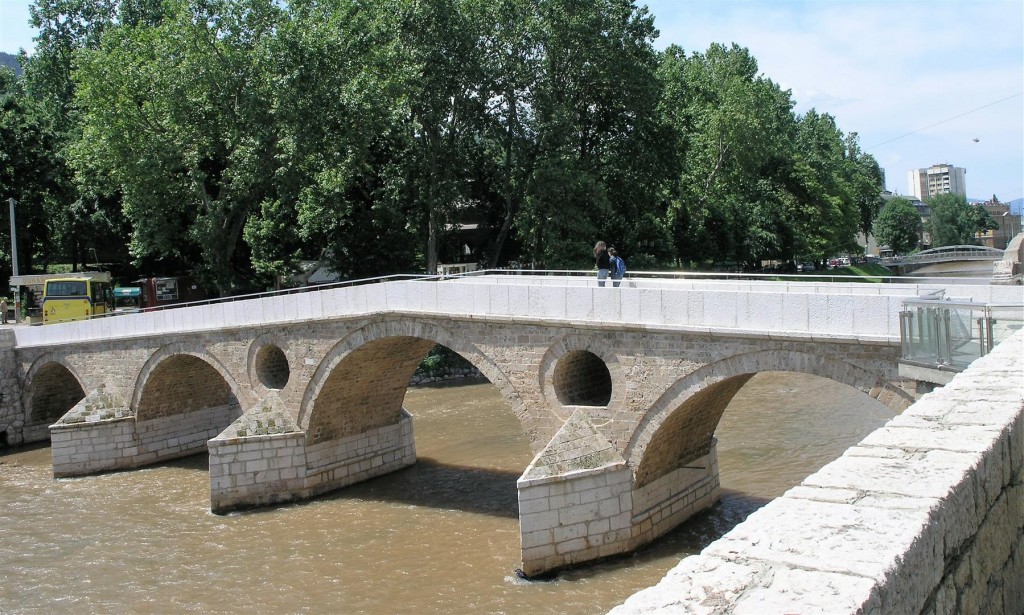

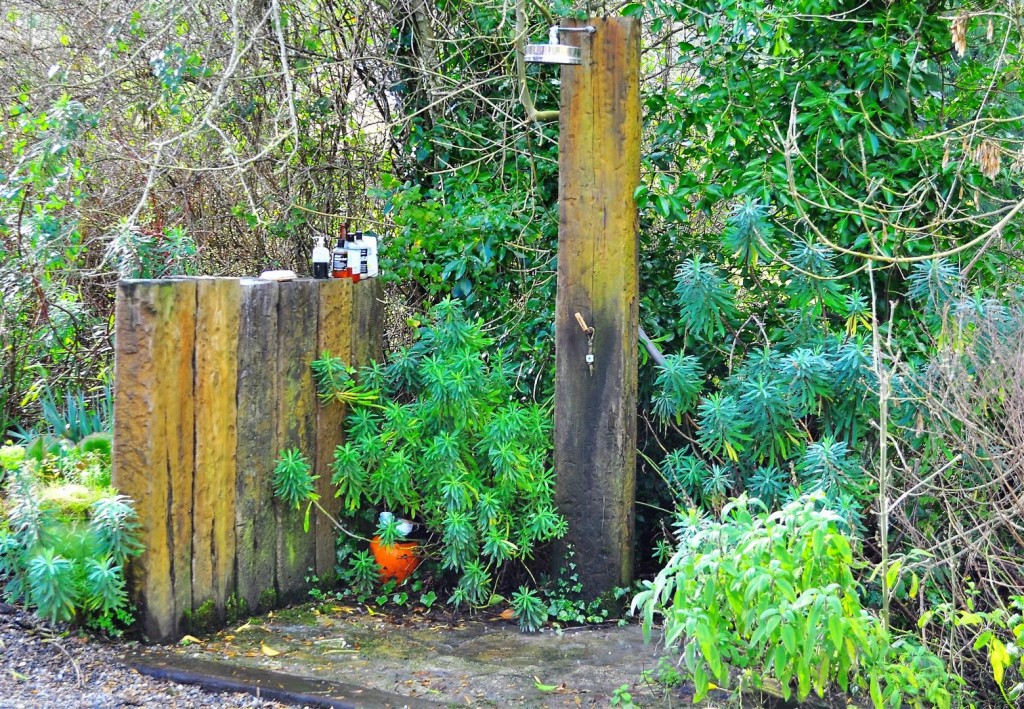
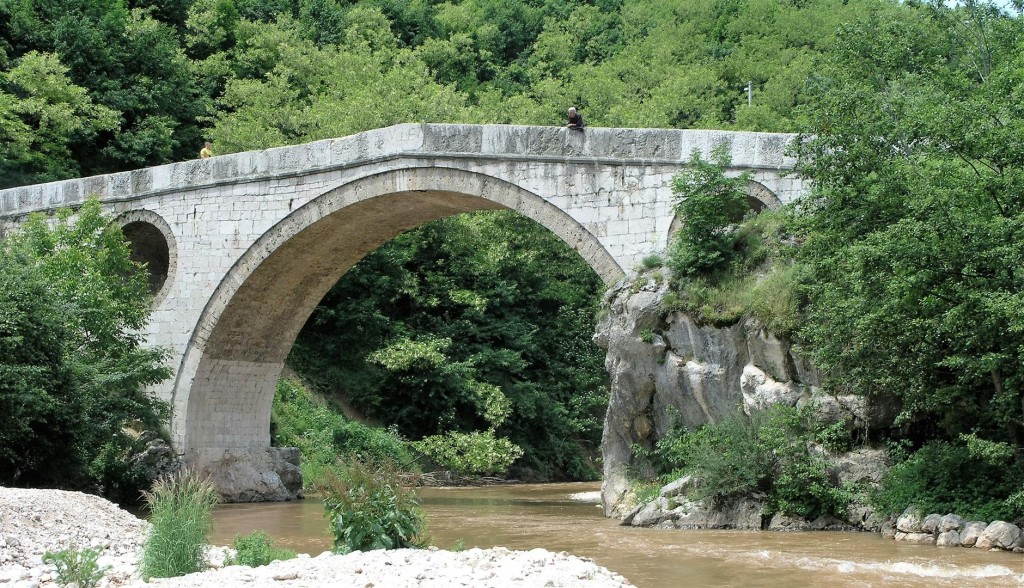
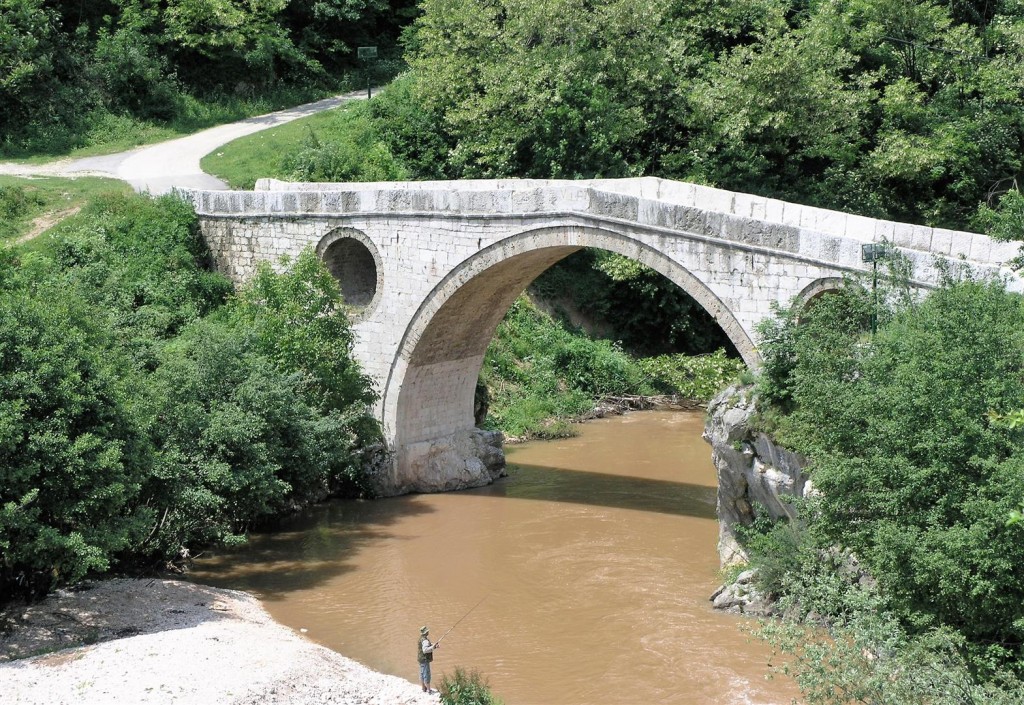
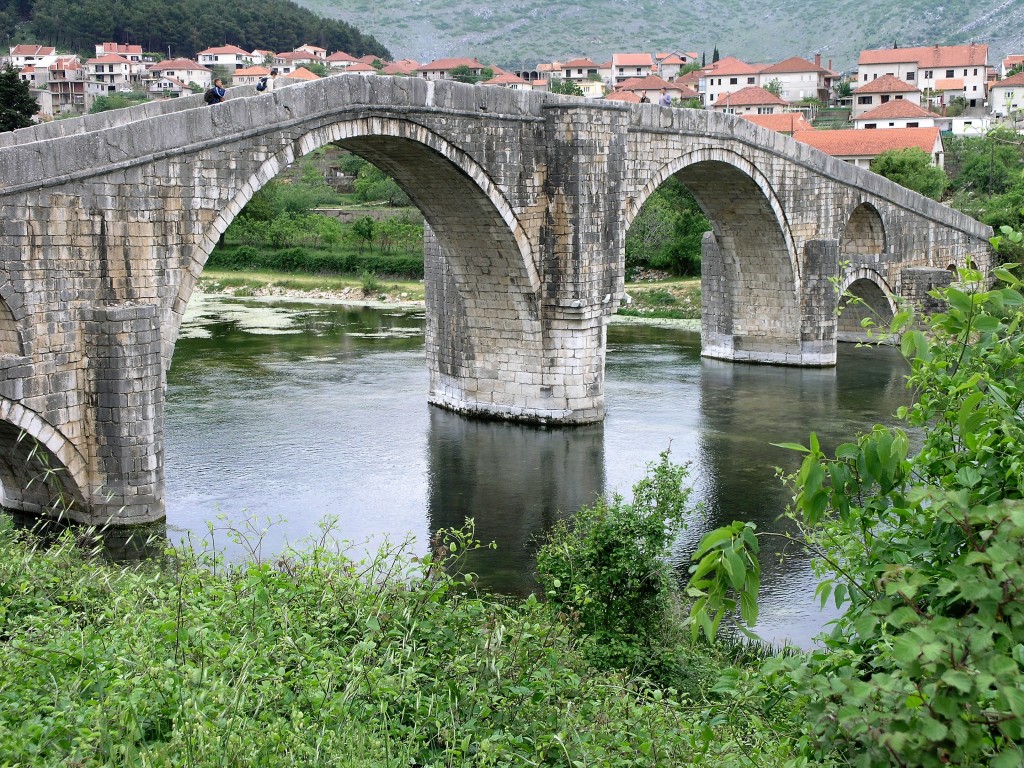
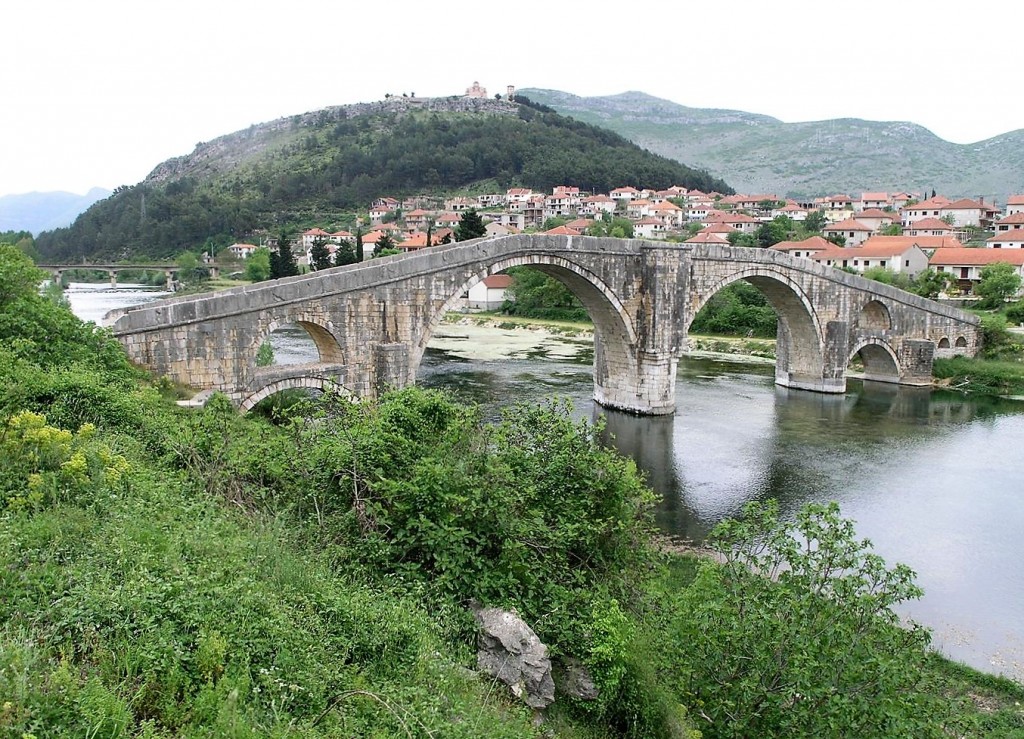
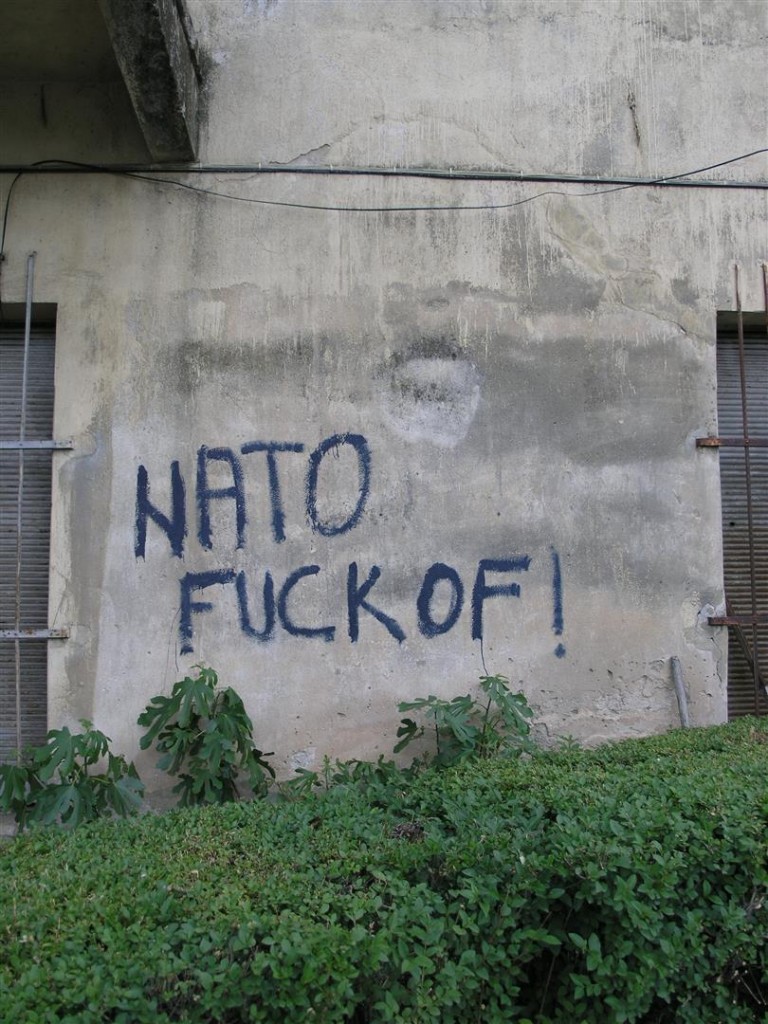
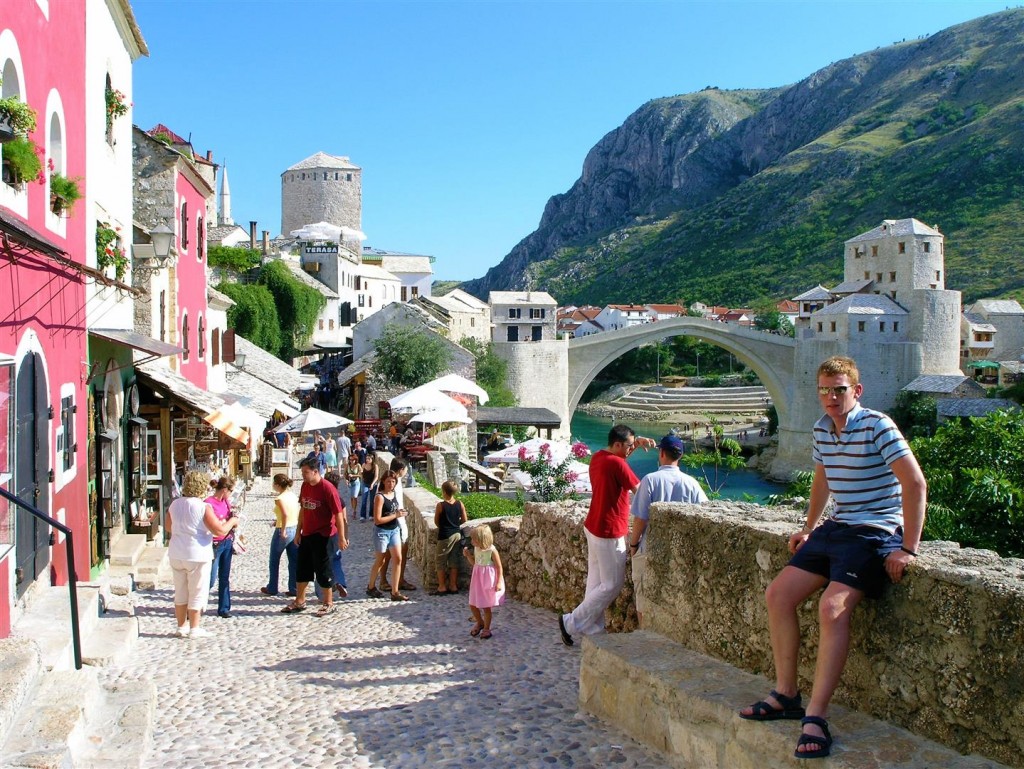
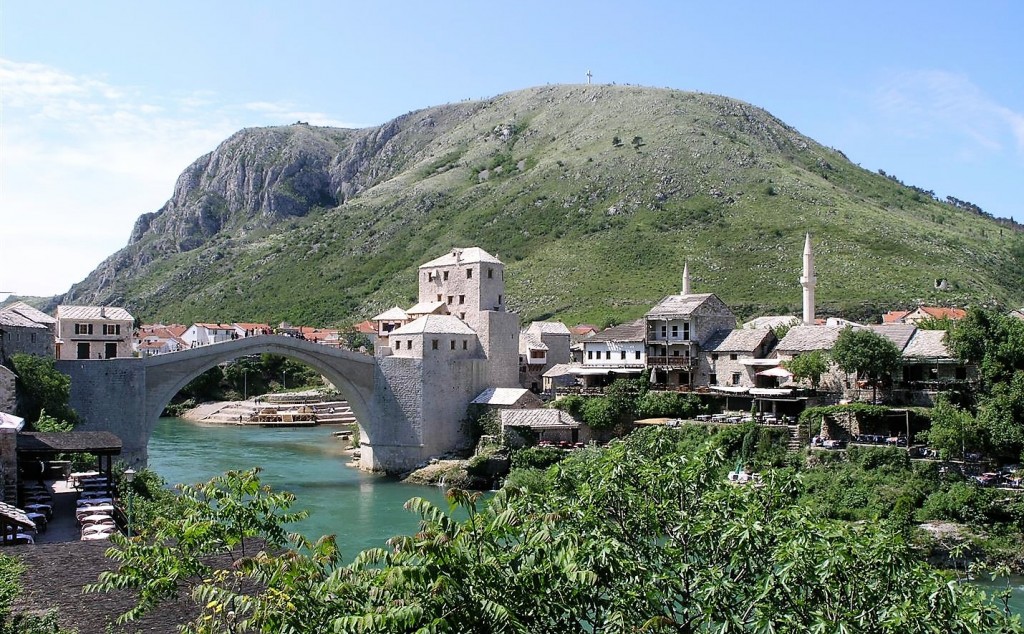
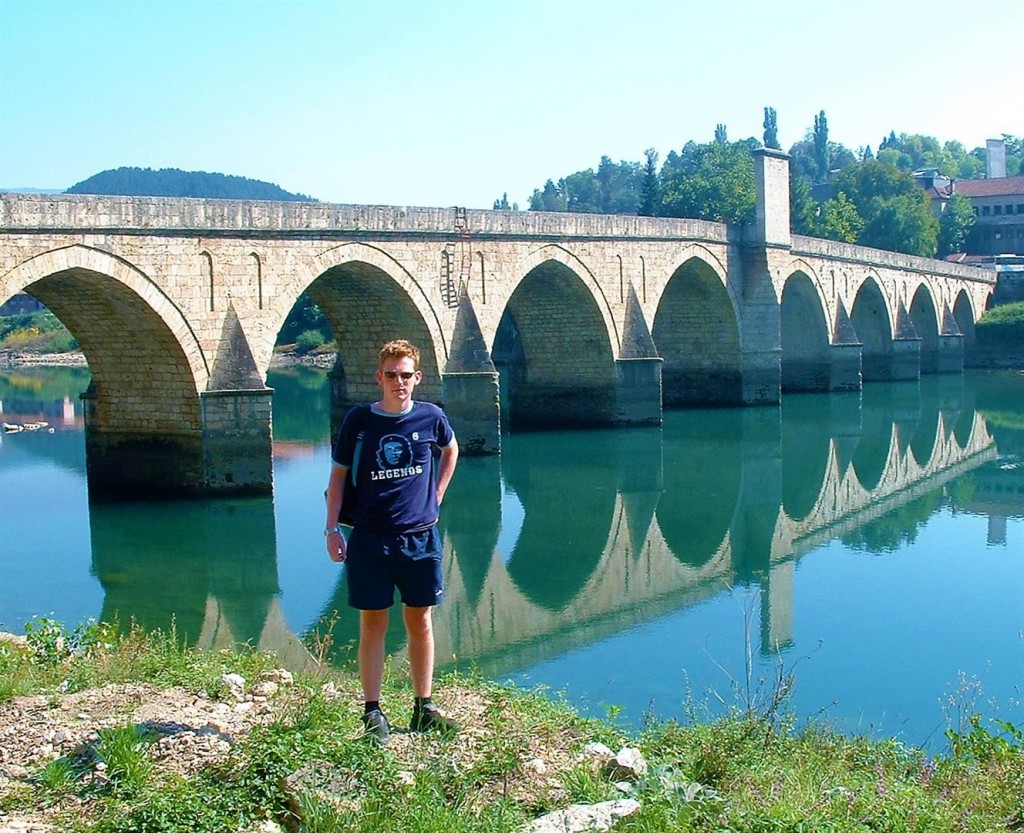
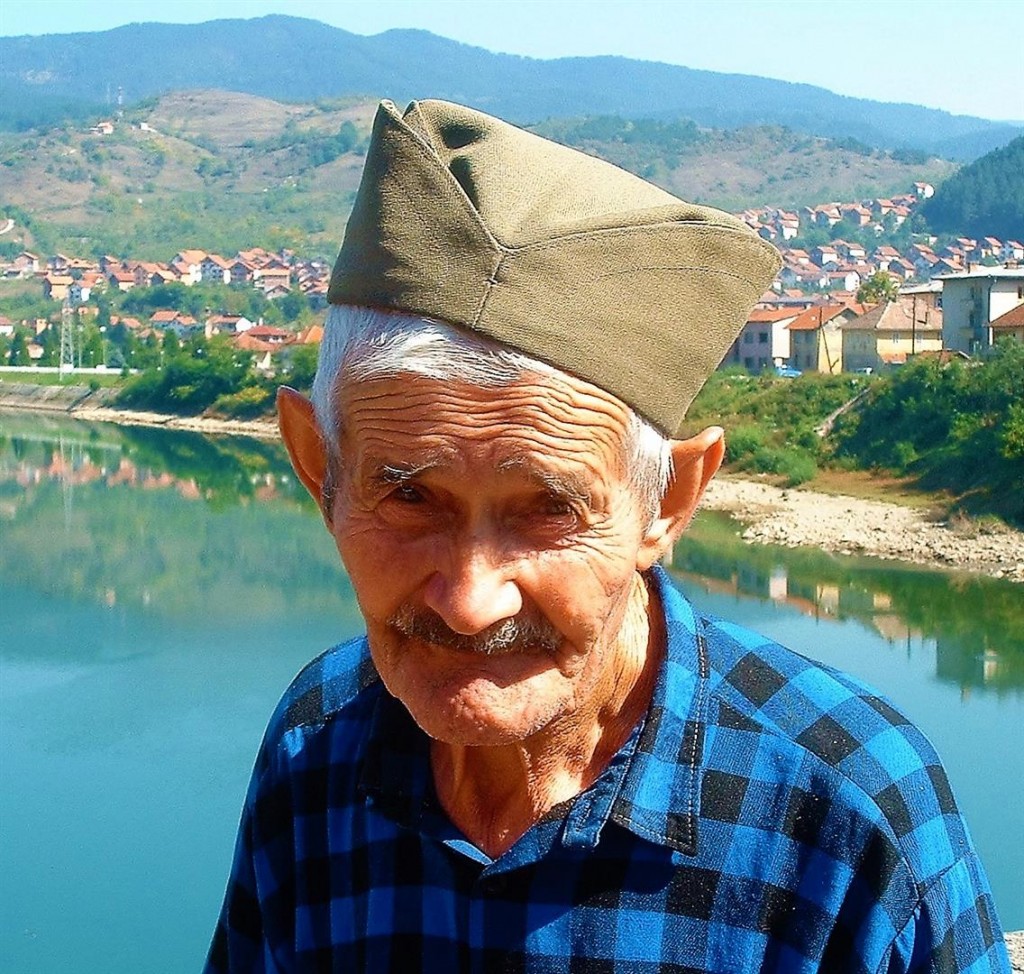
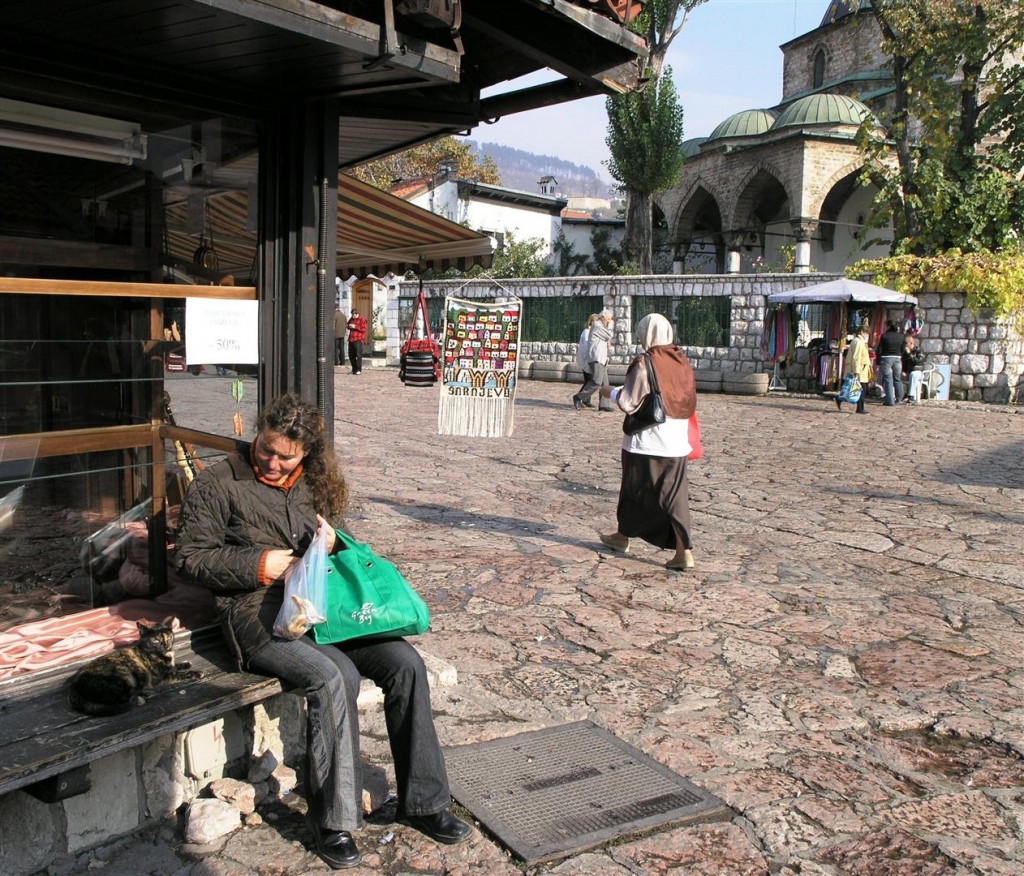
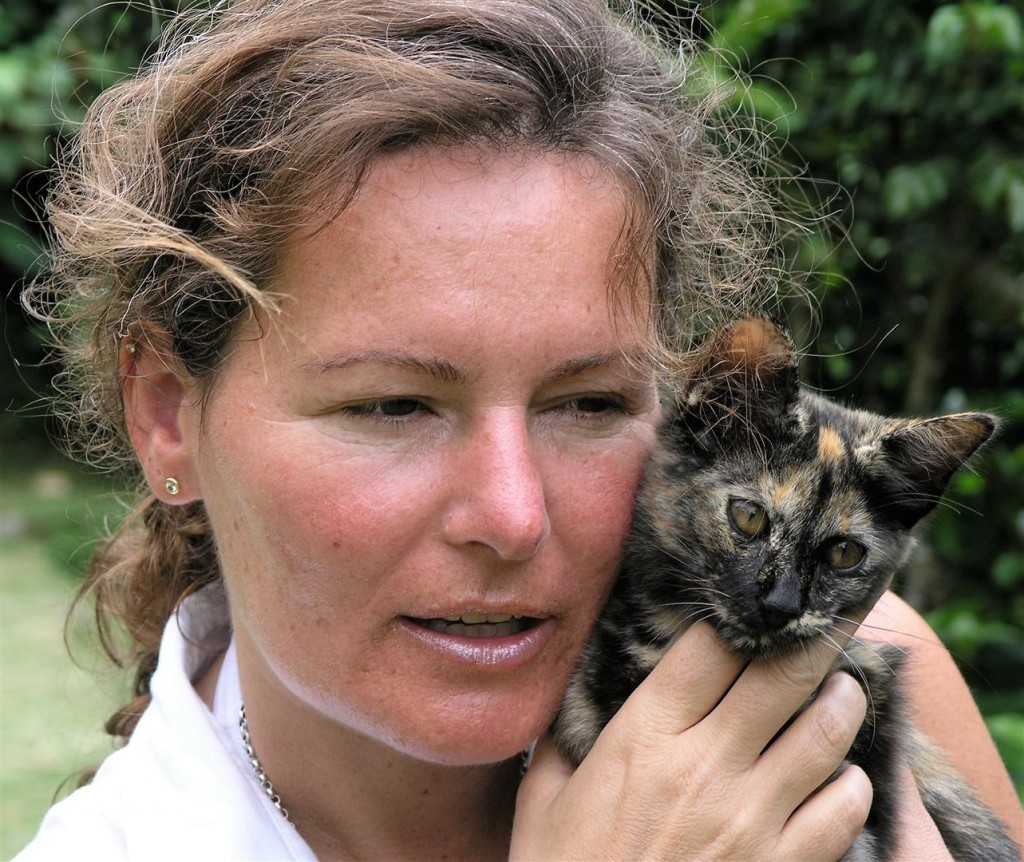
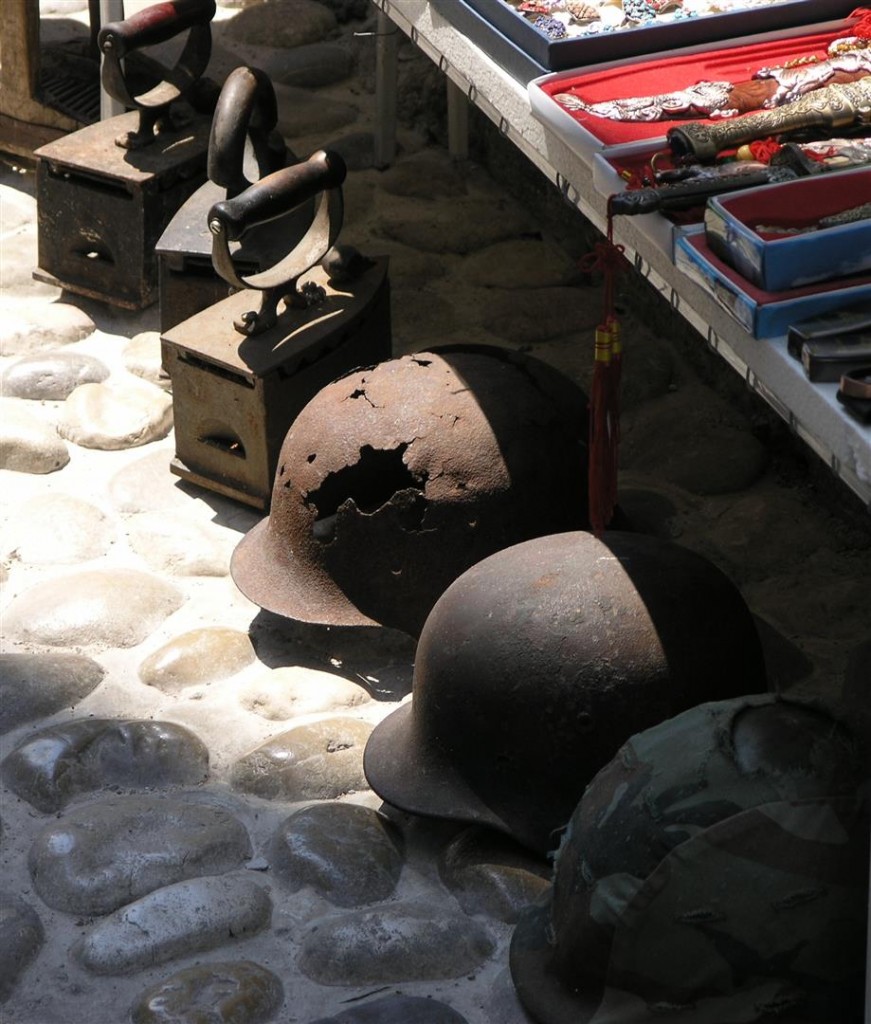
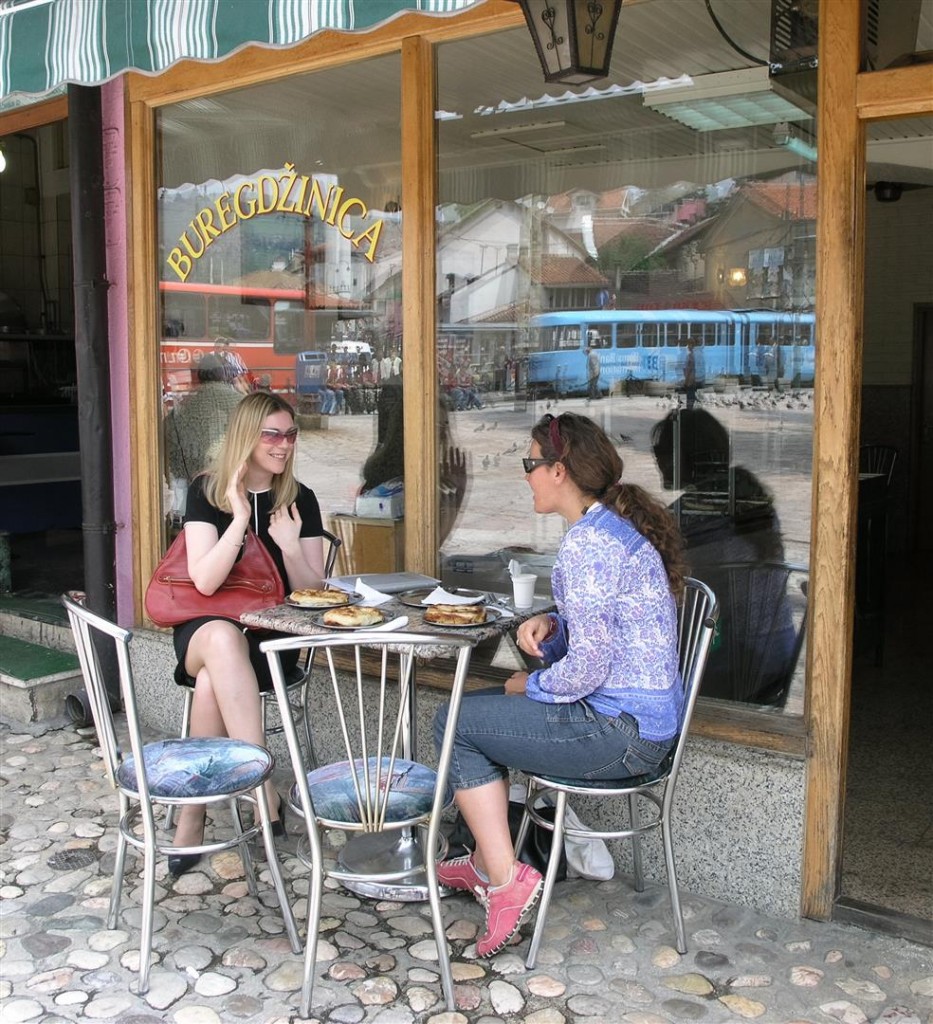
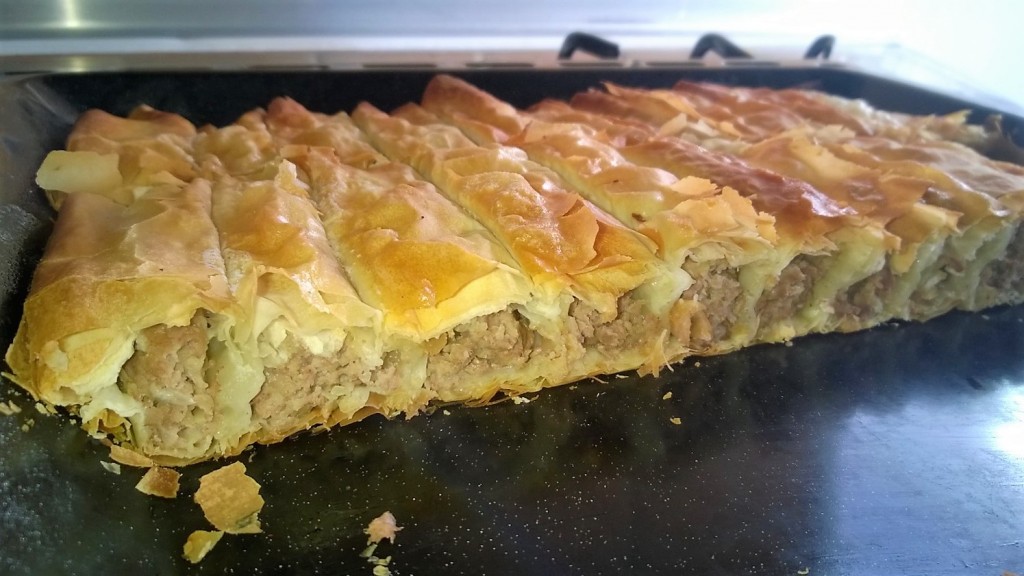
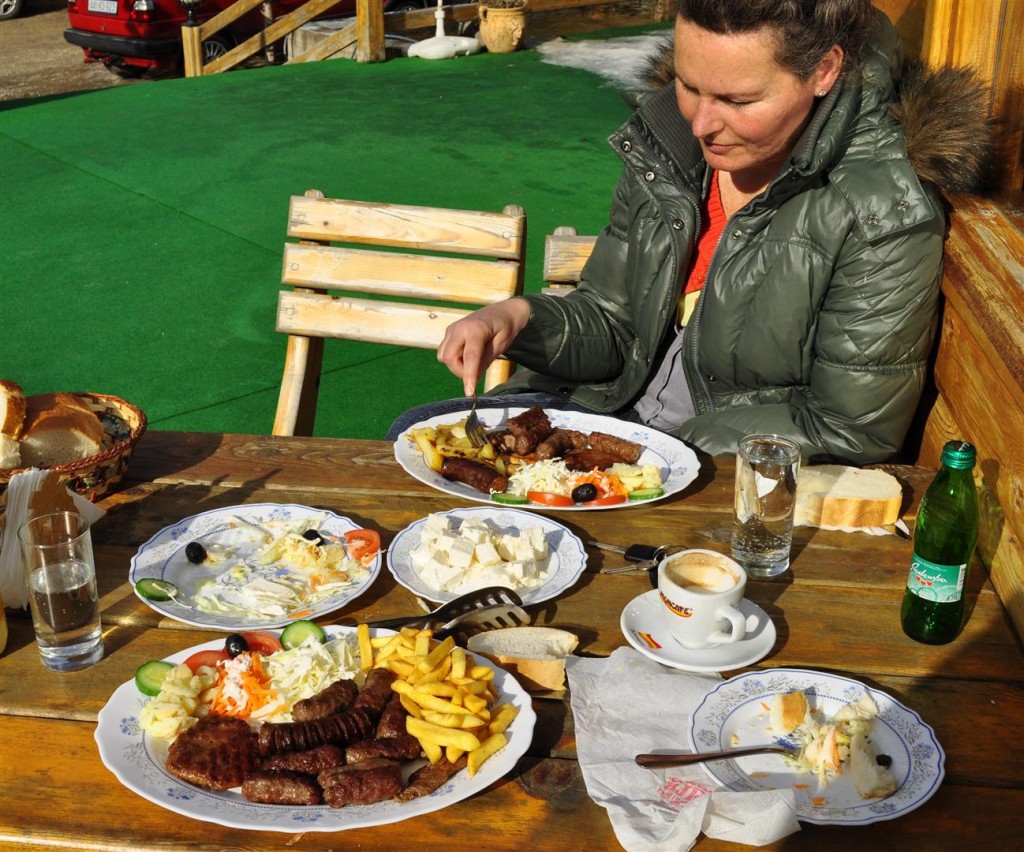

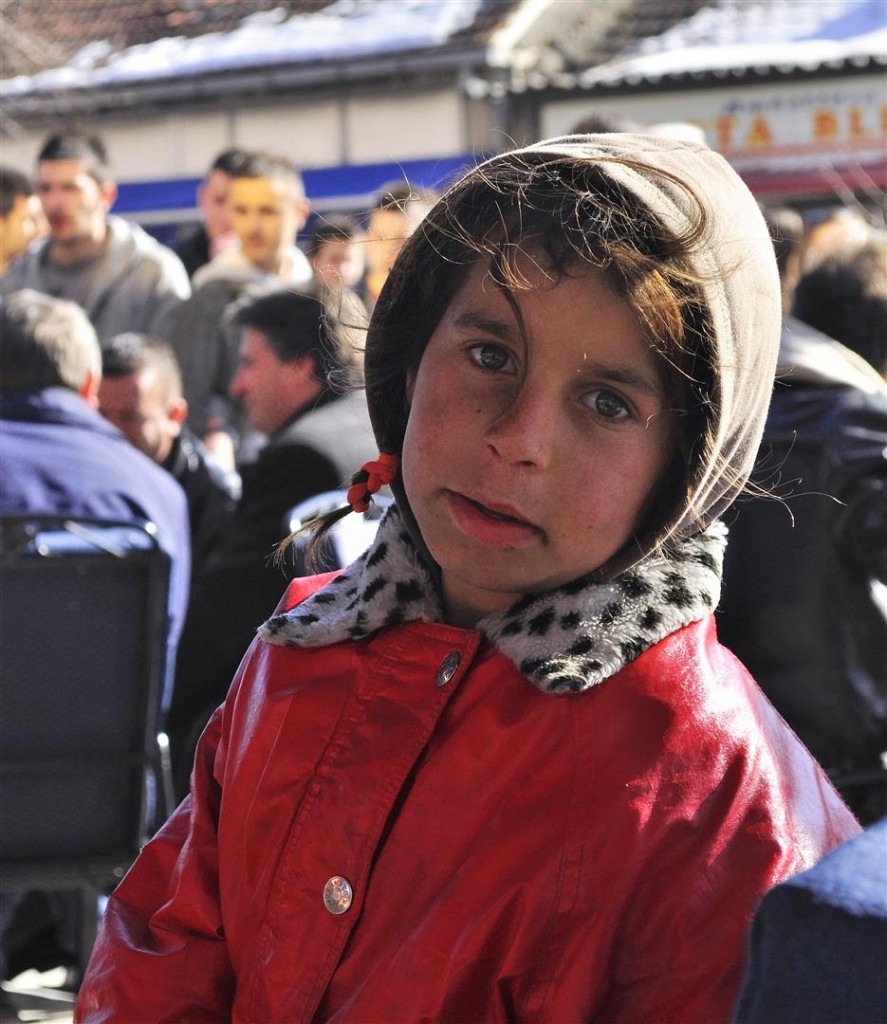
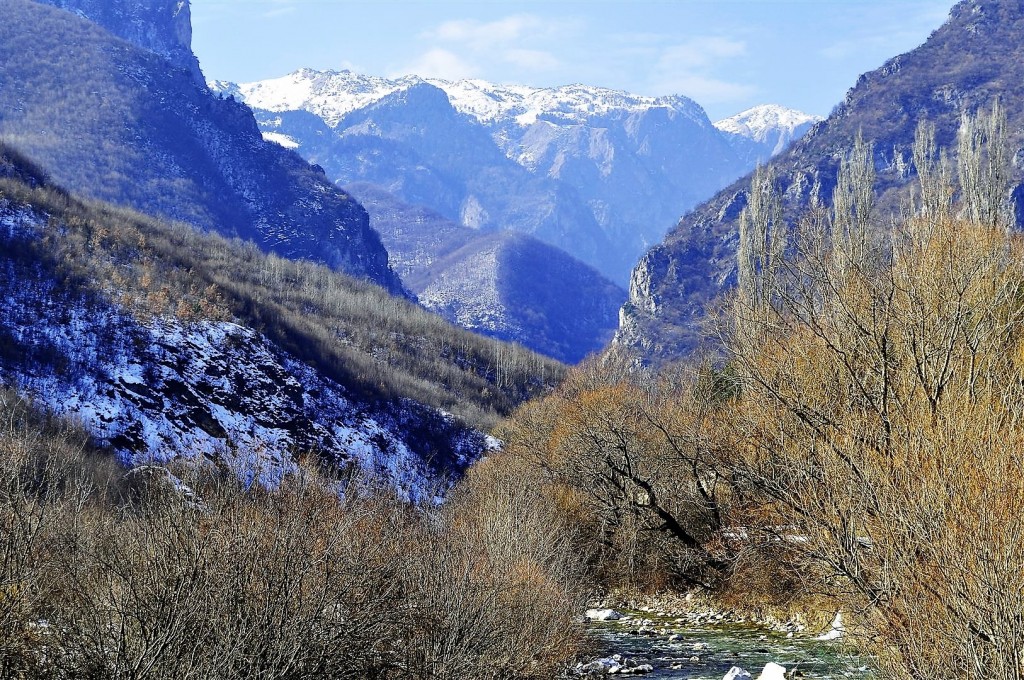
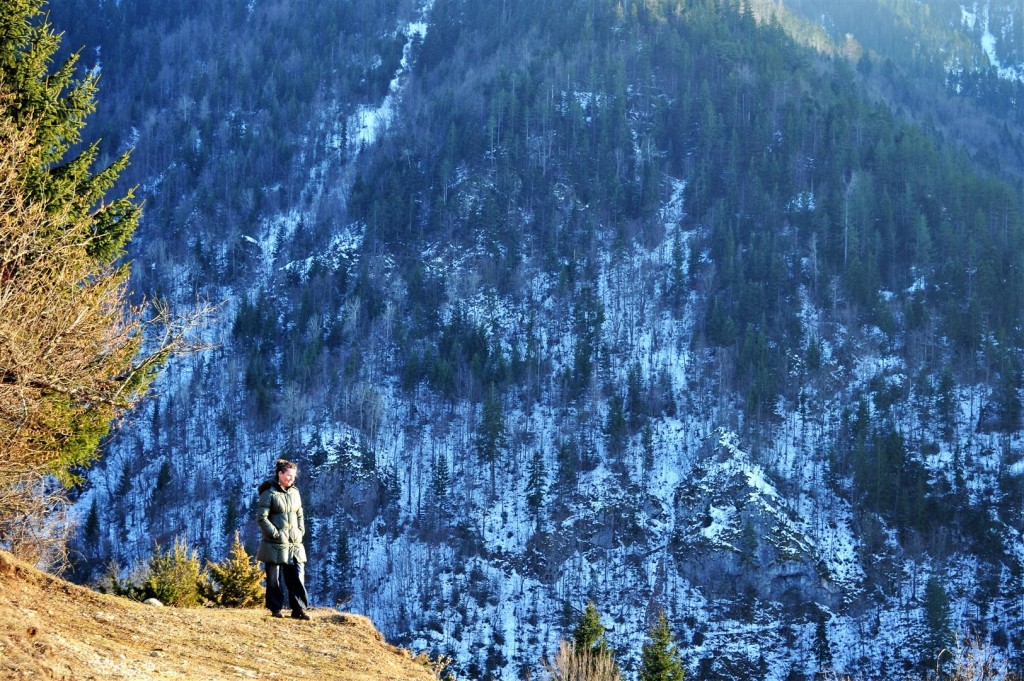
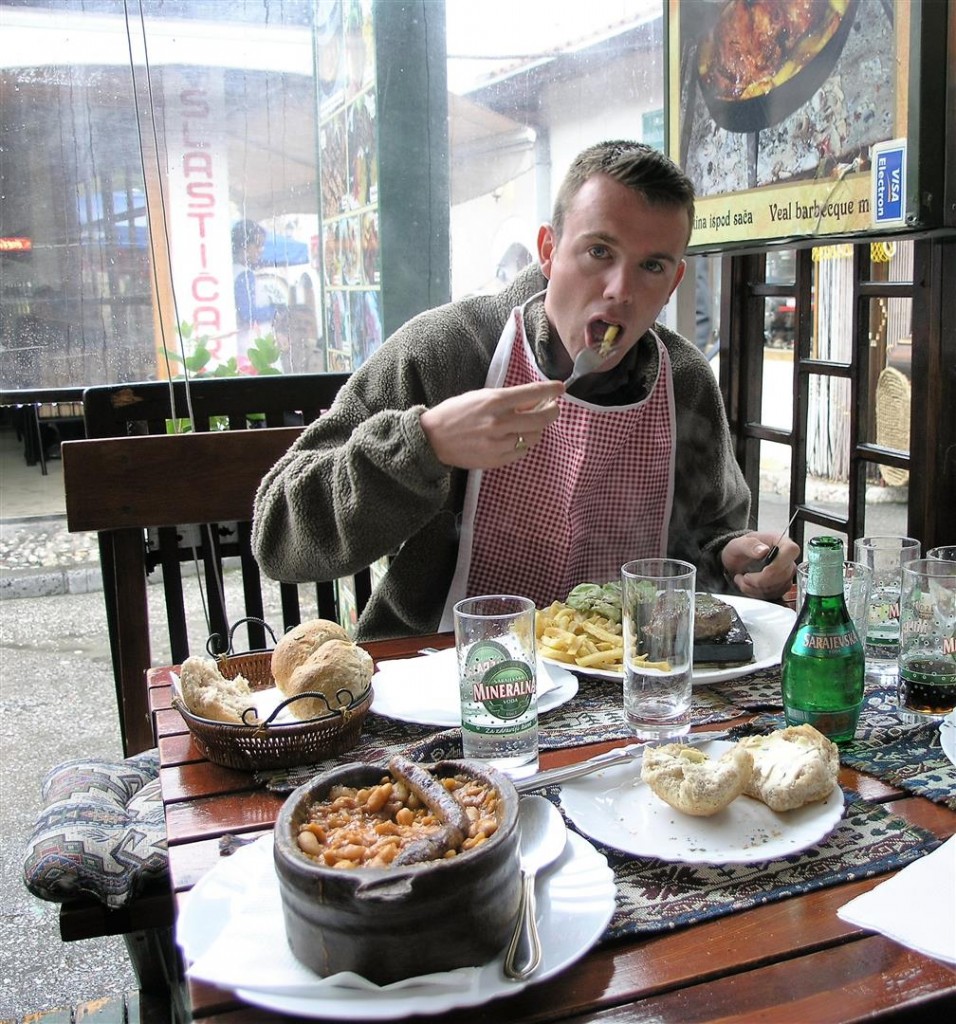

Leave a Reply